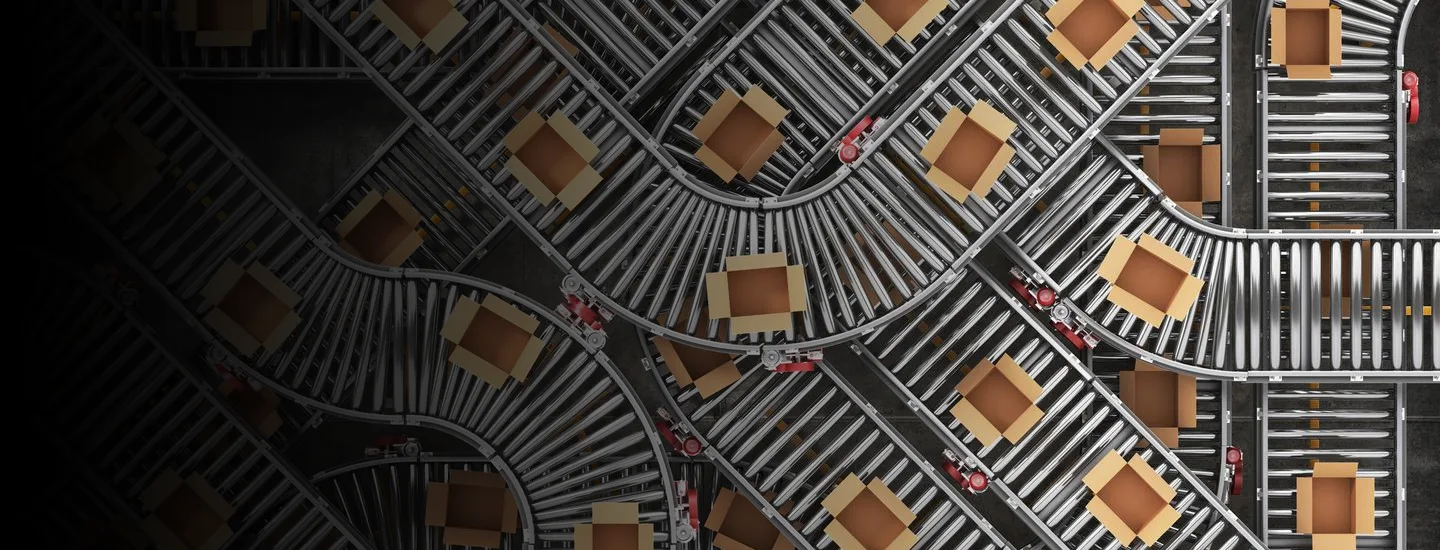The growth of online shopping shows no signs of slowing, with e-commerce sales projected to reach 23% of total retail sales globally by 2027. As retailers seek to increase e-commerce sales, and customers demand faster deliveries to their door, the need for efficient, flexible, and automated operations becomes paramount.
We’ve supported numerous companies in their e-commerce scale-up journey, and previously recommended how retailers can introduce basic warehouse automation to drive operational improvement. Evolving technologies unlock new possibilities for retailers, enabling more sophisticated process workflows and enhancing data-driven decision-making. Possibilities include developing a digital twin of warehouse operations for simulation-based scenario modelling, analyzing the impact of incremental or disruptive actions, and weighting the expected P&L benefits against the respective risks and investment requirements.
Here, we set out five levers that retailers can pull to boost e-commerce performance, through optimizing their warehouse operations, order management, and last-mile delivery strategy.
1. Optimize order workflows
Increased online penetration complicates order flow, even for relatively mature e-commerce retailers, resulting in greater variability in order timing, quantity, and delivery locations. Optimizing split orders, by merging multiple customer orders into a single shipment based on customer behaviour and order waving, can reduce delivery costs and improve picking efficiency. Order waving, or wave picking, groups orders into “waves” based on factors such as due date, order size, and availability, which can then be picked simultaneously instead of individually.
In our experience, multi-item orders typically make up around half of orders for e-commerce retailers. Timing order waving to take place later in the day – during the night or early morning – can help streamline pick routes and drive warehouse efficiency.
2. Simulate new warehouse layouts with BI tools
Warehouse layouts vary significantly, and the volume of e-commerce sales will impact the number and position of packing stations and pickers required. Retailers can streamline warehouse layouts and picking processes by testing pick algorithms, optimizing pick basket ergonomics, and bundling products that usually go in the same basket, to reduce pickers’ travel time and the average pick time per order.
Business intelligence tools are critical in evaluating different warehouse operations scenarios. Companies can leverage existing warehouse management systems (WMS) and the digital twin to simulate new warehouse layouts, and virtually trial material flow before committing to physical layout changes. Quick-win simulations can determine the optimal pick process, quantify the impact of installing conveyors for in-bound material, and simulate different delivery routes for outbound goods. Most simulations are well commoditized and standardized, require low capital investment, leverage existing WMS, and can significantly accelerate the decision-making process.
3. Leverage automation
Automation is central to streamlining the operations of a plant or warehouse, and reducing lead times and costs. Automated guided vehicles (AGVs) and pick towers are two examples of automations that can disrupt or ease day-to-day operations. AGVs can be programmed to work autonomously, according to prescribed pick rules, to transport goods and materials around warehouses or distribution centers without an operator. Retailers can utilize AGVs to handle repetitive manual tasks, provide visibility of material flow and reduce site downtime. Pick towers, or multi-tier shelving, enable high-density storage by using the full height of the warehouse within the same footprint.
4. Reduce packaging
For boxed goods, using the original manufacturer packaging for delivery, rather than packing items within an additional box, can save time, money, and materials. This may require collaboration with suppliers to improve box quality, to minimize damage during shipping.
5. Adapt the last-mile delivery strategy
Last-mile logistics are a complex but vital component of retailers’ e-commerce capabilities. We’ve advised many companies on this journey, and created a framework to help structure and optimize omnichannel retail operations (see figure 1).
We previously explored how last-mile delivery costs impact profitability, and how companies can balance convenience with cost for home delivery operations. Retailers aren’t structured to punctually deliver to individual customers across multiple geographic areas without losing margin, and managing last-mile delivery through multiple suppliers can negatively impact efficiency.
In this evolving landscape, companies have two options:
- Full outsourcing of full-time equivalents (FTEs) and vehicles, including planning, distribution centers and last mile. Full outsourcing is typically more suitable for smaller e-commerce volumes, for example when a courier collects online orders for delivery once per day.
- Partial outsourcing is suitable for larger volumes and allows specialized customer service and customization. This might mean only outsourcing the last-mile element, or last-mile and distribution centers, while keeping planning in-house. Although the costs are higher, partial outsourcing can help companies resolve route saturation; manage tariff competition between delivery service providers; meet service-level targets; offer last-mile delivery to third-party customers; and achieve economies of scale.
When deciding between a full or partial outsourcing model, key considerations are customer experience, and volume and margin projections. For a client that opted for a partial integration strategy, we developed an ad-hoc IT solution to help with the rapid scaling of bulky items deliveries (see figure 2). The tool enabled the company to track all e-commerce orders in their portfolio, including all relevant logistic costs; perform order-by-order simulations; and define optimal routing by optimizing costs and service levels.
Conclusion:
The rapid growth of e-commerce, and its substantial impact on retail sales and workflows, means retailers must focus on optimizing warehouse operations and last-mile delivery strategies.
Streamlining warehouse layouts, implementing efficient order workflows, and improving automation will underpin cost-efficiency and meeting customer demands. In an evolving and highly competitive e-commerce market, successfully navigating these strategic and operational elements will pave the way for future growth.

